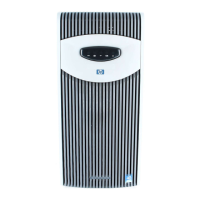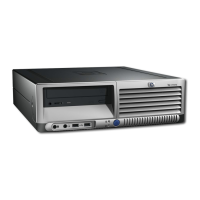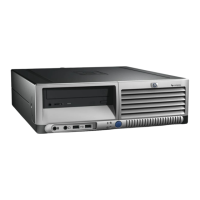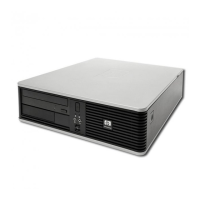Removal and replacement procedures 63
Hot-plug RAID memory
Hot-plug RAID memory provides a similar level of memory protection as hot-plug mirrored memory (on
page 61) but obtains this protection using less total memory. Hot-plug RAID memory protects the server
against uncorrectable memory errors that would otherwise result in a server failure.
Although hot-plug mirrored memory keeps two copies of all memory data, hot-plug RAID memory keeps
only one copy of all memory data and additional parity information. If an uncorrectable memory error is
encountered, the server can create the proper data using the parity information and the information from
the other memory boards that contain no failures. In a hot-plug RAID memory configuration, 25% of the
installed memory is not available to the operating system. In a hot-plug mirrored memory configuration,
however, 50% of the installed memory is not available to the operating system.
As with hot-plug mirrored memory, hot-plug RAID memory allows failed or degraded DIMMs to be
replaced while the server is running without requiring server downtime. The memory board with the failed
DIMMs can be removed, failed DIMMs replaced, and the board re-inserted into the server without any
interruption to the operating system.
Hot-plug RAID memory is only supported if all four memory boards are installed. No operating system
support is required.
The following guidelines apply to hot-plug RAID memory:
• All general memory requirements apply.
• Hot-plug RAID memory is only supported with four memory boards.
• All four memory boards must have the same amount of total memory. However, each board can
have different DIMM configurations as long as they have equal total size. Any deviation from this
rule results in the server defaulting to Advanced ECC ("Advanced ECC memory" on page 60).
• Hot-replace operations are supported.
• If you remove a board while the server is running and do not replace it, the server defaults to
Advanced ECC on the next reboot.
Configuring the memory
Configuring the memory system of the server requires configuring both hardware and software.
To configure the memory:
1. Install the correct amount of memory for the desired AMP mode. For a list of AMP options, refer to
"Memory options ("Memory overview" on page 58)." For more information, refer to "General
memory configuration requirements (on page 59)."
2. Test the DIMMs for all AMP modes, except Advanced ECC, before configuring the AMP mode in
RBSU. The two testing methods are:
o POST memory test (on page 64)
o ROM-Based Diagnostics test ("ROM-based diagnostics" on page 64)
NOTE: If the total amount of memory has changed, the POST memory test will run
automatically. Additional memory testing is not necessary.
3. Select the AMP mode ("Selecting the AMP mode" on page 64).

